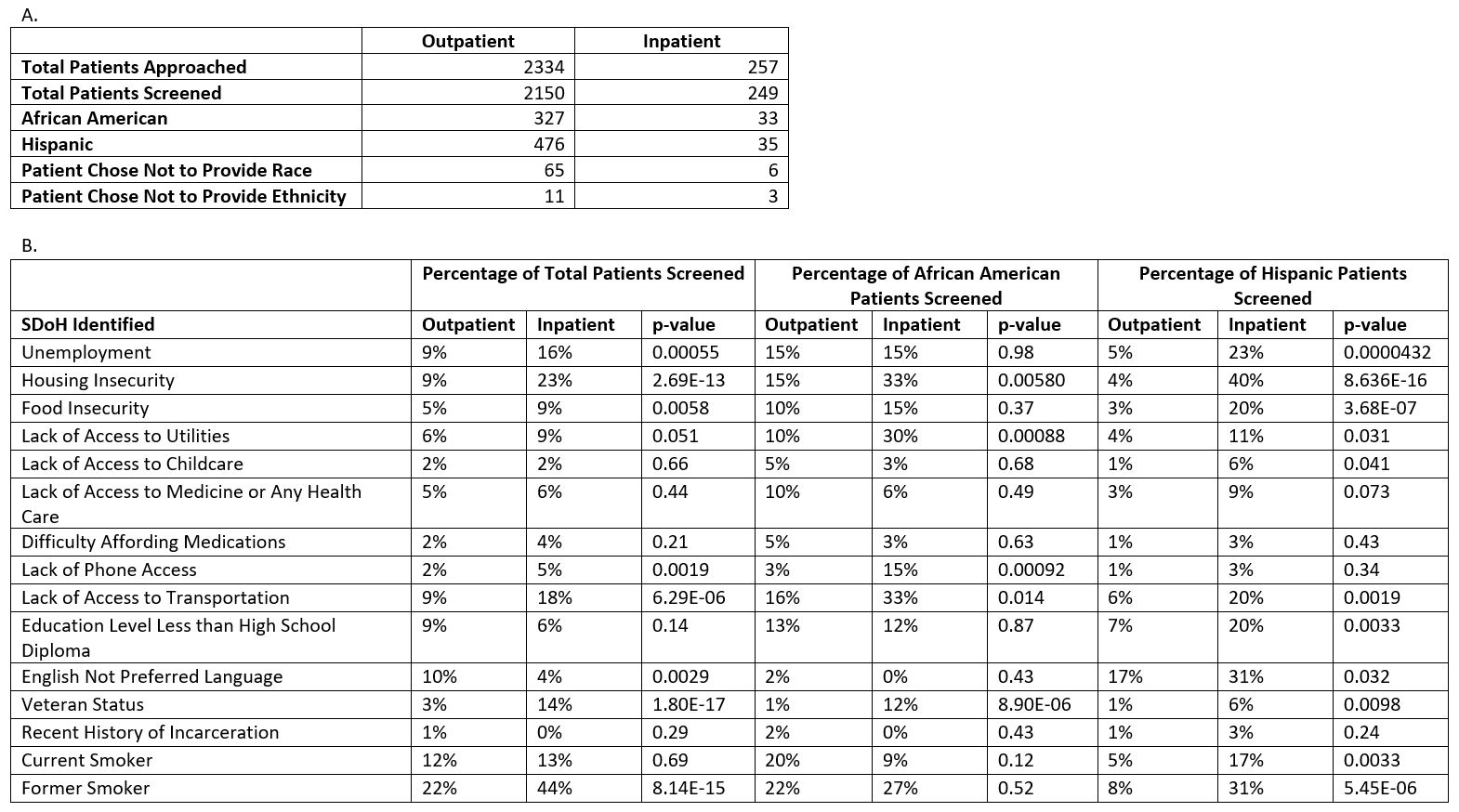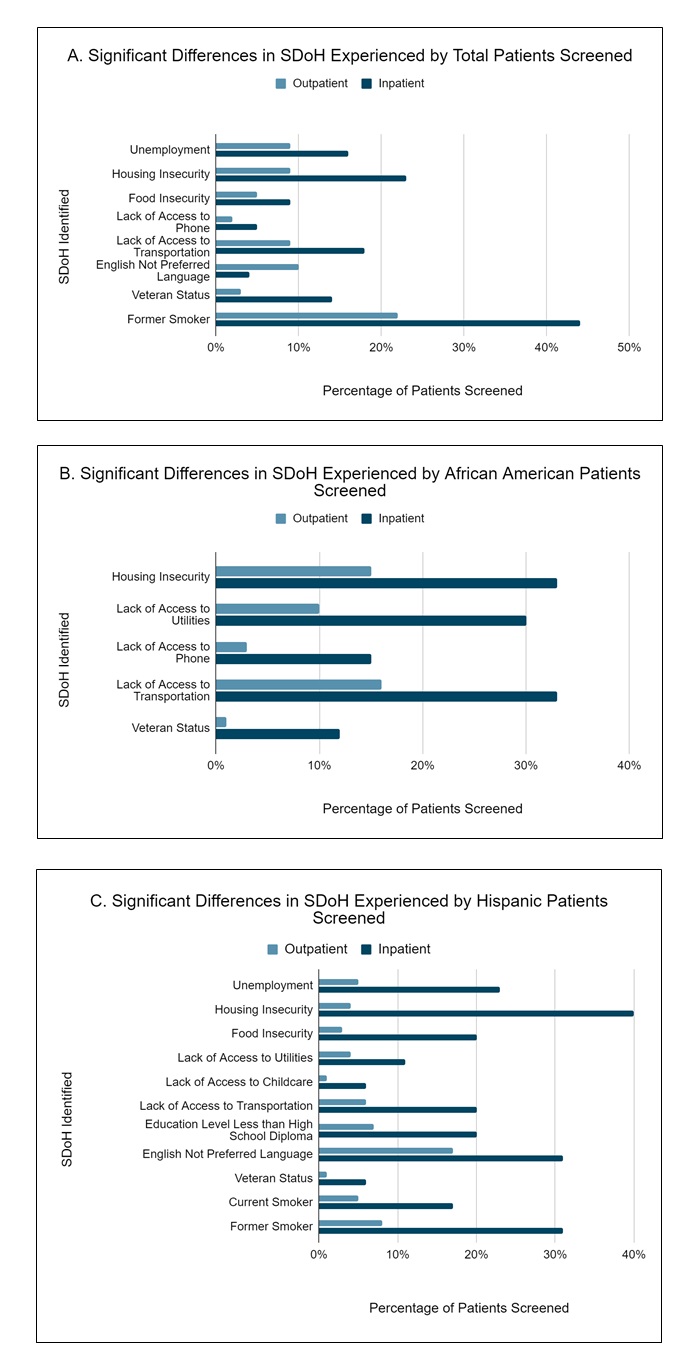Background: Social determinants of health (SDoH) are the conditions in which people are born, work, and live that affect about 80% of their health outcomes (1,2). Gaps in addressing SDoH contribute to health disparities and inequities which disproportionately harm racial and ethnic minorities (3). Addressing SDoH needs with interventions such as housing, nutritional, or income support have been shown to improve health outcomes or decrease healthcare spending (4).Studies have examined the SDoH needs in specific populations such as frail elderly patients (5), patients readmitted with community acquired pneumonia and heart failure (6), veterans (7), and children with diabetes (8) and studies focused on hospitalized patients in general have limited their examination of SDoH to socioeconomic status (9, 10). Current literature on the effect of SDoH on hospitalized patients has been limited in scope.This study aims to identify the SDoH experienced by admitted patients and compare them to those experienced by outpatients to determine if there are significant differences in the needs of the two populations as some may influence need for hospitalization.
Methods: Data was collected by the volunteers for the University of Connecticut Health Leaders (UCHL) program. Volunteers screened patients for SDoH and provided them with resources to address any SDoH barriers the screening identified. The screening, data collection, and subsequent data analysis were determined to be IRB exempt by the University of Connecticut School of Medicine. This study reviews the results from screenings performed in the outpatient setting, in primary care clinics, and the inpatient setting, at UConn John Dempsey Hospital, from September 13, 2021 to May 6, 2022. The screening results were compared using Chi-Square Tests of Independence with a p-value of < 0.05 for the 2 groups overall and then specifically for patients who identified as African American or Hispanic.
Results: Volunteers screened 2,150 outpatients (327 African American, 476 Hispanic) and 249 admitted patients (33 African American, 35 Hispanic) (Figure 1a). Admitted patients experienced significantly more unemployment, homelessness, housing insecurity, food insecurity, lack of phone access, and lack of access to transportation than outpatients and were also more likely to be former smokers or veterans than outpatients (Figures 1b and 2a). African American admitted patients were more likely to experience housing insecurity, difficulty affording utilities, lack of phone access, and lack of access to transportation and were more likely to be veterans than African American outpatients (Figures 1b and 2b). The largest difference between outpatient and inpatient groups was found with Hispanic patients as admitted Hispanic patients experienced significantly more of the 11 of the 15 SDoH evaluated by the screening compared to Hispanic outpatients (Figures 1b and 2c).
Conclusions: This study is the first to identify and compare the most common SDoH experienced by admitted patients and outpatients. Further, this is the first study to identify race/ethnicity based differences in SDoH for hospitalized patients. The high prevalence of certain SDoH among inpatients may indicate that those factors are more likely to worsen someone’s overall health if not addressed or possibly affect future hospitalizations. By identifying these factors, healthcare teams can proactively address them so that patients can be safely discharged home and avoid future readmission.


